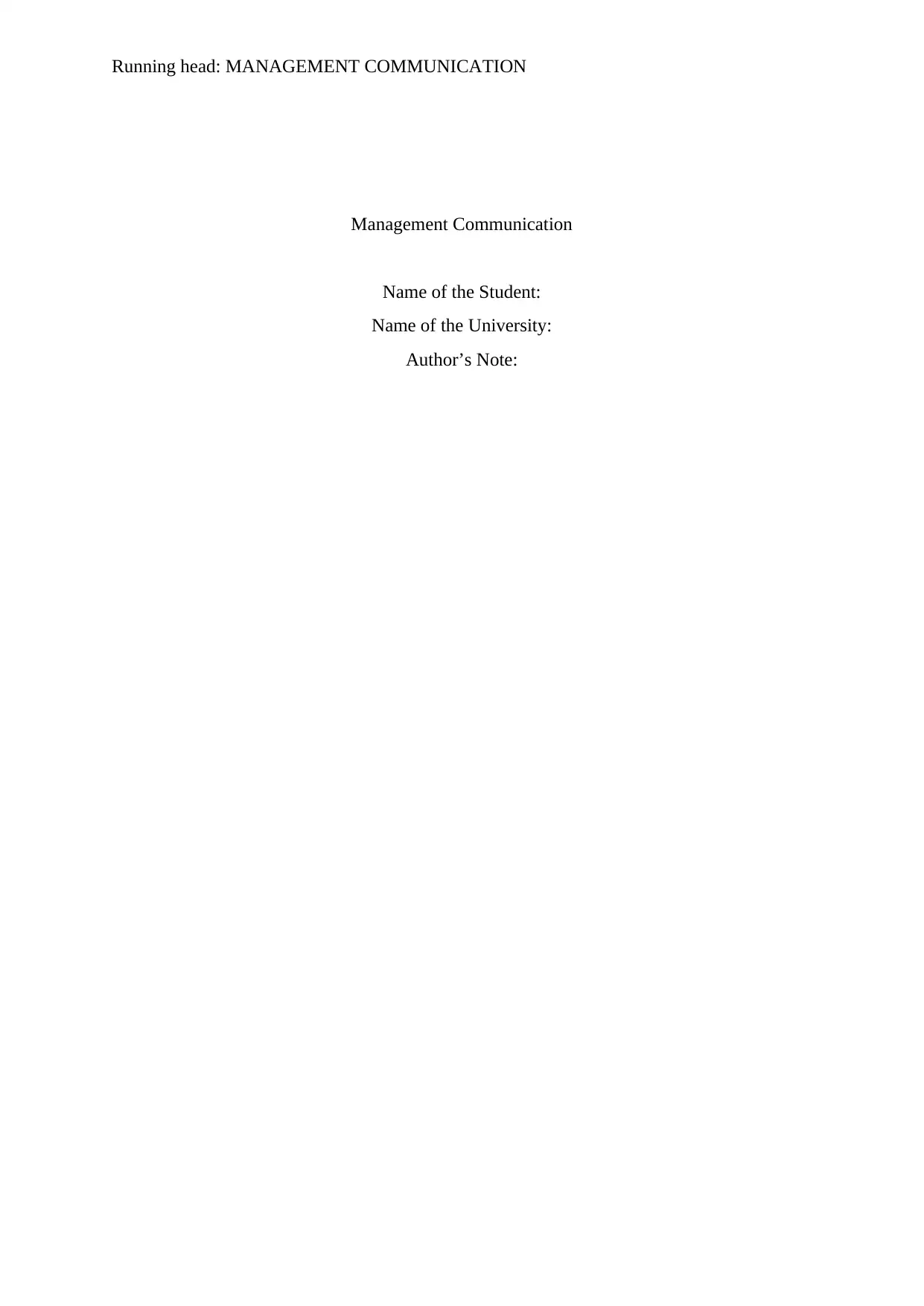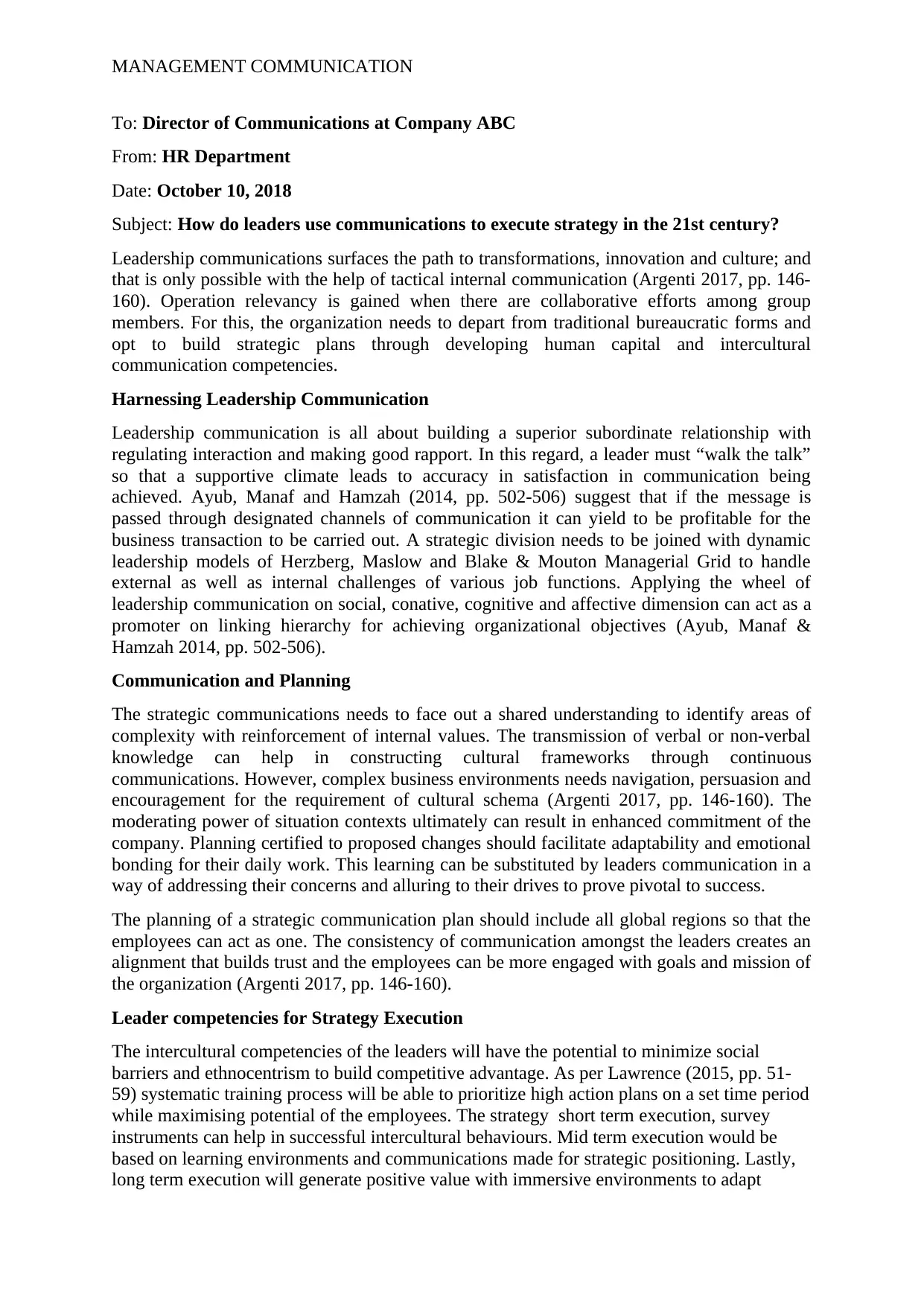Leadership Communication: Executing Strategy in the 21st Century
VerifiedAdded on 2023/06/05
|4
|710
|122
Essay
AI Summary
This essay examines the critical role of leadership communication in executing strategy in the 21st century. It emphasizes the importance of tactical internal communication, collaborative efforts, and departing from traditional bureaucratic forms to build strategic plans through human capital and intercultural communication competencies. Effective leadership communication involves building strong subordinate relationships, fostering a supportive climate, and utilizing designated communication channels. Strategic communication requires shared understanding, reinforcement of internal values, and cultural frameworks. The essay further discusses leader competencies, including intercultural skills, systematic training processes, and adapting communications to differentiate between misinterpretations and malignant intercultural communication skills. The study concludes that effective communication is essential for successful strategy execution in today's complex business environment. Desklib provides access to similar essays and study resources for students.
1 out of 4










![[object Object]](/_next/static/media/star-bottom.7253800d.svg)